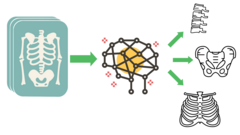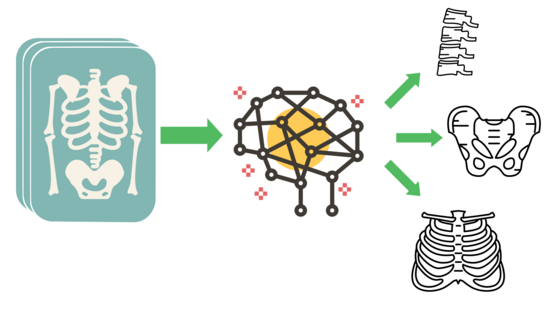Automated Bone Segmentation and Labelling using Deep Learning
In this project, we work with big volumetric data and state-of-the-art Artificial Intelligence methods. The resulting algorithm for automated bone detection will enrich the Virtual Reality surgical planning system SpectoVR, which allows surgeons to visualise three dimensional body images in an intuitive way.
Segmenting and labelling bones in a three dimensional Computed Tomography (CT) scan is a challenging task, requiring highly trained professionals and a lot of time. We seek to automate the process in order to be able to quickly locate and outline any bone in a CT scan. Using deep learning algorithms, we want to train an artificial neural network that is able to distinguish bone from other types of tissue. After training, the resulting neural network should be able to generalise to new data. It can then be used to segment and label bones in CT scans without human intervention. Taking it one step further, our algorithm should be able to distinguish single bones and to automatically assign the bones' names.
After integrating this feature into SpectoVR, it can be employed for various purposes including fast navigation to specific bones in surgical planning, to hide or highlight single bones, and for educational purposes.
Project leader: Eva Schnider

E. Schnider, A. Huck, M. Toranelli et al. Improved distinct bone segmentation from upper-body CT using binary-prediction-enhanced multi-class inference.. Int J CARS (2022). read
E. Schnider, A. Horváth, G. Rauter, A. Zam, M. Müller-Gerbl,P.C. Cattin (2020) 3D Segmentation Networks for Excessive Numbers of Classes: Distinct Bone Segmentation in Upper Bodies. In: Liu M., Yan P., Lian C., Cao X. (eds) Machine Learning in Medical Imaging. MLMI 2020. Lecture Notes in Computer Science, vol 12436. Springer, Cham. read
No open projects currently




